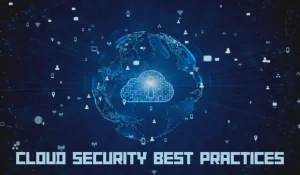The digital terrain has become more complex and, therefore, the multi-cloud environments have begun to prevail as the means for companies to accommodate the infrastructure of multiple cloud service providers’ to gain multiple benefits of flexibility, scalability, and fault-tolerance. Although multicloud strategies offer many advantages at the same time, they generate new types of security concerns. Adequately containing of the cloud security in the wide variety of cloud platforms requires an all-in-one system that takes data protection, access control, and threat identification as main essence. Our blog post target this topic security of multi-cloud management systems. We will also discuss the measures that organizations can take to ensure their valuable digital assets.
Understanding Multi-Cloud Security Challenges 
At the outset, it becomes imperative to look deeply into cleaning the security troubleshooting related to multi-cloud environments. These challenges include:
Complexity: Security monitoring and maintenance among multiple cloud networks comes with the challenge of complexity since each cloud service provider likely means different set of tools, policies, and configurations.
Visibility: Visibility in the relationship between cloud environments and the detection and response process causes many obstacles to the effective detection of threats and the response phase.
Data Protection: It is essential to make sure about the criterion of persistent data protection security as well as compliant universally in contrast cloud projects.
Identity and Access Management (IAM): Ensuring that identities are managed, entitlements mapped and access controls agreed between different cloud environments is a tough task that is replete with inherent contradictions.
The Strategies for Critical Management of Mutli-Cloud Security.
Develop a Comprehensive Security Strategy: Start with developing a full-fledged security strategy which will embrace all security aspects of your Multi-cloud environment and address both specific risks and particular needs of the environment. Enact strict security policies, processes, and controls that shape the way access to data is granted, encrypted and compliant to security standards.
Implement Identity and Access Management (IAM) Controls: Use centralized IAM controls which develop ways to manage user identities, permissions and authentication mechanisms in all cloud platforms at the same time. Impose RBAC and least privilege principles to define the level of privileges needed by users based on their roles.
Encrypt Data at Rest and in Transit: Try encryption to secure all kinds of data in the multi-cloud environment- including the data at rest and during transmission. Create strong encryption methods, for instance, use TLS communications over the network and encryption management solution for safe and proper data storage.
Deploy Cloud-Native Security Solutions: Leverage niche cloud security solutions offered by cloud service provider platforms including platform based firewalls, intrusion detection systems (IDSs), and security information and event management (SIEM). These solutions are designed for each can platform providing visibility and control only to that cloud environment.
Utilize Multi-Factor Authentication (MFA): Take enhanced security to a higher level by incorporating multi-factor authentication (MFA) for user access to cloud systems You should make users login using several factors among which could be the passwords, biometrics or one time passcodes, so as to cut down the risks of unauthorized login.
Regularly Monitor and Audit Cloud Environments: Include actions for monitoring and auditing cloud environments periodically that will ensure the security incidents and vulnerabilities are detected and violations are prevented at all times. Encourage the cloud-native monitoring tools and the third-party solutions to absorb the view of the SaaS infrastructures and apps.
Implement Network Segmentation and Micro-Segmentation: Use network segmentation and micro-segmentation methods to make avenues between workloads and applications with a further level of virtual cloud environments. Networks are split into segments which ads deals with lateral movement in the networks by attackers and limits the impact of security breaches.
Conduct Regular Security Assessments and Penetration Testing: Continuously perform security assessments and penetration testing to find and fix the vulnerability locations of the multi-cloud environments. Engage security experts from a third party to carry out complete assessment and simulate real-world cyberattacks.
Establish Incident Response and Disaster Recovery Plans: Prepare incident response and disaster recovery plans for multi-cloud environments that are customized. Develop a clear procedure of dealing with security incidents that involves containment, investigation, mitigation, and recovery. Prudently review and improve these plans periodically to make sure the system is in place.
Invest in Employee Training and Awareness: Provide employees with training and awareness programs that explain security best practices, cloud-particular risks, and their role in maintaining security. Develop an atmosphere of security awareness and responsibility throughout the organization.
Conclusion
In the light of the fact that more and more organizations follow multi-cloud strategy, security management efficiency becomes the key factor to protect against emerging threats and vulnerabilities. Through adhering to these multi-cloud security management best practices, companies can lower the risks, protect their digital assets, and keep compliance in complex cloud environments. By adopting a strategic and integrated security posture, organizations will unlock the abundant capabilities of multi-cloud settings while safeguarding the privacy, integrity, and availability of their vital information.

